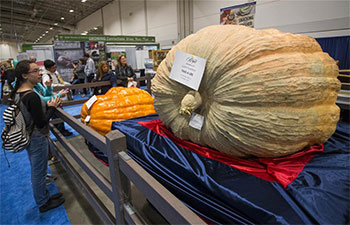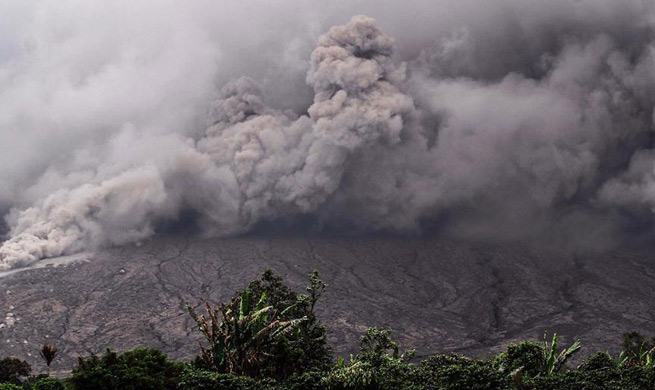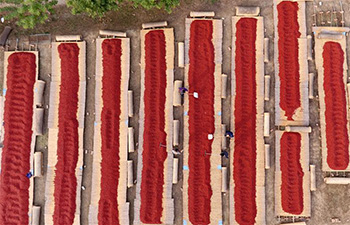LOS ANGELES, Nov. 4 (Xinhua) -- An international team of astronomers successfully completed the first international drill using a real asteroid to test global response capabilities.
The target of the exercise was asteroid 2012 TC4, a very elongated asteroid that's about 15 meters long and roughly eight meters wide, which was known to be on a very close approach to Earth.
The goal of the so-called "TC4 Observation Campaign," launched in April under the sponsorship of the U.S. National Aeronautics and Space Administration (NASA)'s Planetary Defense Coordination Office, is to recover, track and characterize a real asteroid as a potential impactor, and to test the International Asteroid Warning Network for hazardous asteroid observations, modeling, prediction and communication.
The exercise commenced in earnest in late July, when the European Southern Observatory's Very Large Telescope recovered the asteroid. The finale was a close approach to Earth in mid-October.
On Oct. 12, TC4 safely passed Earth at a distance of only about 43,780 kilometers above Earth's surface. In the months leading up to the flyby, the international team of astronomers from the U.S., Canada, Colombia, Germany, Israel, Italy, Japan, the Netherlands, Russia and South Africa led by NASA scientists all tracked TC4 from ground- and space-based telescopes to study its orbit, shape, rotation and composition.
Using the high-quality observations from optical and radar telescopes collected during the campaign, scientists at NASA's Center for Near-Earth Object Studies (CNEOS) at the Jet Propulsion Laboratory in Pasadena, California were able to precisely calculate TC4's orbit, predict its flyby distance on Oct. 12, and look for any possibility of a future impact.
A network of optical telescopes also worked together to study how fast TC4 rotates. The observations that revealed the shape and confirmed the composition of the asteroid came from astronomers using NASA's Goldstone Deep Space Network antenna in California and the National Radio Astronomy Observatory's 100-meter Green Bank Telescope in West Virginia, according to NASA.
"We demonstrated that we could organize a large, worldwide observing campaign on a short timeline, and communicate results efficiently," Vishnu Reddy of the University of Arizona's Lunar and Planetary Laboratory in Tucson, who led the observation campaign, was quoted as saying in a news release.
Michael Kelley, TC4 exercise lead at NASA Headquarters in Washington, said, "We are much better prepared today to deal with the threat of a potentially hazardous asteroid than we were before the TC4 campaign."

















